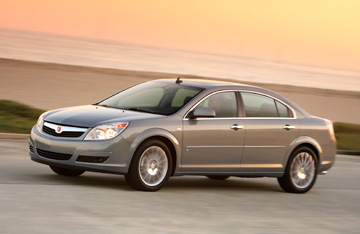
American consumers favor Asian and German auto makers, which could force the Detroit Three to adopt more aggressive pricing, a survey suggests.
Satisfaction levels among customers of General Motors Corp., Ford Motor Co. and Chrysler LLC are “slumping” while, industry-wide, customer satisfaction is at “an all-time high,” according to the American Customer Satisfaction Index.
The American Customer Satisfaction Index is a national economic indicator of customer evaluations of the quality of products and services available to household consumers in the U.S.
“The problem for domestic companies is that they now lag further behind their foreign counterparts,” says University of Michigan Professor Claes Fornell, author of the index, which consists of a quarterly review of products and services gleaned from customer evaluations. “This is not going to be helpful, as (Detroit auto makers) will lose more pricing power.”
This trend poses a particularly onerous problem for Detroit as rising gasoline prices spark a market shift away from trucks and SUVs, to smaller, thriftier cars and cross/utility vehicles. Trucks and SUVs comprise the core of the lineups at GM, Ford and Chrysler.
The harsh verdict against GM, Ford and Chrysler flies in the face of recent studies by “Consumer Reports,” J.D Power and other sources. That body of research suggests Detroit auto makers are building higher-quality products that are resonating well in the market.

Detroit’s auto makers have sought in recent weeks to adjust their truck-heavy production mix as pump prices hovered near $4 per gallon, about $1 ahead of last year.
But production shifts take time. Ford, for example, will retool three truck plants for small-car production and introduce six new European-flavor vehicles to North America by 2010.
Chrysler plans leverage alliances with other global auto makers, such as Nissan Motor Co. Ltd., with an eye to model-year ’10 vehicles and hints at some all-new products as early as next year.
GM, meanwhile, dramatically has stepped back its pickup and SUV production, a move that will see truck output cease at four assembly plants and ramped up car and CUV builds. It plans a new compact car for the U.S. in mid-2010.
The situation has contributed to second-quarter losses of $15.5 billion at GM and $8.7 billion at Ford. As a private company, Chrysler does not file a quarterly financial report, but the auto maker earlier this month claimed first-half earnings of $1.1 billion before interest, tax, depreciation and amortization.
Meanwhile, Asian auto makers – while not entirely immune to the shift in consumer demand due to a shortage of cars – have been able to seize the opportunity. American Honda Motor Inc, for instance, has managed to post a sales gain this year on the strength of its fuel-sipping Civic compact. And with demand for its Prius hybrid soaring, Toyota Motor Sales USA Inc. has fashioned a reputation as the nation’s greenest auto maker.
Fornell’s quarterly survey reflects Detroit’s present fortunes. No Detroit-based auto maker ranks among the top four nameplates, yet the bottom three in the industry all are American brands. Chrysler’s Dodge and Jeep brands bring up the very rear of the survey.
Toyota’s Lexus brand and BMW AG’s namesake led all auto makers in the survey. The Toyota and Honda brands both improved 2%, compared with the previous quarter, to surpass GM’s Buick and Cadillac brands for the survey’s No.2 spot. The longtime U.S. nameplates were joined at No.3 by Saturn, which leapt 5% to post its biggest gain since 1998.
Fornell cites GM’s use of a new marketing tagline, “Rethink American,” as well as a revitalized lineup that includes the Aura sedan, which won the 2007 North American Car of the Year, the Outlook CUV and the sporty Astra compact.
“Continuing this momentum, later this year Saturn will offer a hybrid version of the SUV,” Fornell says. “It has started to invite buyers to live chat services online, provide test-drives at home or the office, and has also revamped a number of dealership facilities. Last year, the division had a 13% increase in retail sales. Even though sales have slowed considerably since, it has been less depressed compared with several other GM brands.”
GM’s Chevrolet brand, for instance, suffered the survey’s the greatest plunge 4%.
Ford’s Lincoln-Mercury brand slipped 4% in consumer’s eyes to tie with Hyundai and GM’s GMC division at No.4. Nissan, Mazda and Kia followed the Blue Oval brands with a 3% improvement. Nissan pulled equal to the industry average while Mazda and Kia dropped below average.
Nonetheless, the survey leaves little for auto makers to look forward to, as it also forecasts weak consumer spending with growth of no more than 2.3% in the third quarter.




